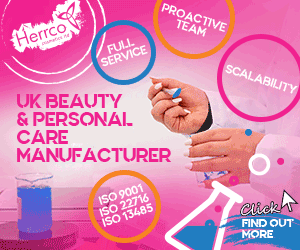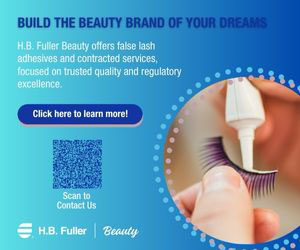Growth in Pakistan’s hair care market is surging ahead. As the number of working women rises, along with their desire to look good, sales of shampoo and conditioner products have risen.
According to Euromonitor International, the country’s hair care market grew by 11.7% in 2015 to reach retail sales of US$334.9m.
This growth is primarily due to women who “are becoming financially independent and have a greater say in financial matters at home, including expenditure at home”, says Euromonitor. The upswing in the number of women who are joining the workforce means there is “a rise in aspirations among Pakistani women to look better in the workplace and this has resulted in a rise in spending on beauty and personal care products among households,” adds the market research company.
Pakistan: Hair care market value, 2015
| US$m | %+/- | |
| Total hair care market* | 334.9 | 11.7 |
| 2020 | 262.0 | 8.0* |
Looking at the category in more detail, modelled data from Euromonitor shows that retail sales of hair shampoo totalled US$158m in 2014, and leapt to $179m in 2015, a rise of 13.3%. Furthermore, by 2020 sales could reach $240m. Hair conditioner sales experienced equally strong growth, rising 14% from $43m in 2014 to $49m in 2015, and these products are set to reach $68m in 2020.
2-in-1 products that contain both shampoo and conditioner, also grew consistently. 2014 sales of $31.8m for this category increased to $33.3m in 2015, up 4.7%, and are estimated to reach $37.9m by 2020, according to Euromonitor.
Market research company Technavio estimates the value of Pakistan’s shampoo and conditioner market to be similar to Euromonitor’s assessments. “Prima facie retail sales value of this segment [are currently] in the range of $250m to $300m,” says Brijesh Kumar Choubey, Senior Analyst at Technavio. That said, basic products are still dominant, with the share of shampoo and conditioners being high compared with other products such as hair colourants, styling agents, and perms and relaxers, notes Choubey.
Pakistan: Hair care market value and forecast, by sub-category, 2014-2020*, US$m
| 2014 | 2015 | 2020 | |
| Shampoo | 158 | 179 | 240 |
| Conditioner | 43 | 49 | 68 |
| 2-in-1 products | 31.8 | 33.3 | 37.9 |
Media attraction
In addition to the growing number of female consumers with financial independence, another factor that has contributed to increasing demand across several beauty and personal care categories is increased media exposure of brands and products. New international media channels, which are increasingly viewed in Pakistan, are making young urban consumers more aware of beauty and personal care products such as men’s personal care, men’s pre-shave products, shower gels, styling gels and conditioners, says Euromonitor.
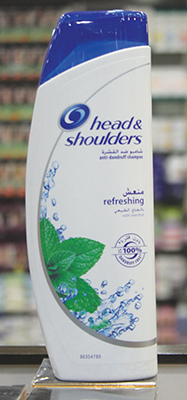
Scalp treatment brands such as Head & Shoulders
Investment by multinational personal care companies has also helped to stimulate purchases. “Awareness of the usage and benefits of such products was low among consumers, and international players such as Unilever Pakistan and L’Oréal Pakistan have been carrying out awareness programmes to educate consumers,” says Euromonitor. “These players have been introducing new products accompanied by promotional programmes to educate consumers and drive sales.” The market research company adds: “Hair colourants are also gaining popularity among the urban youth as styling and fashion products that enhance their personality and style. Unless a major increase in adoption of standard shampoos comes from the rural market, growth will be increasingly more represented by conditioners and 2-in-1 products.”
Market researcher Canadean agrees that the use of personal care products is increasing in Pakistan due to consumers’ rising income, urbanisation, and a growing middle class population. A 2014 report from the company says: “The growing popularity of international brands among the large, young population in Pakistan is also fuelling the growth in the hair care market.” It adds: “Growing health and beauty consciousness among consumers is creating opportunities for specialised products in the shampoo and hair oil categories.”
A head for business
And the trend is on the up, with room to grow. Pakistan’s female labour force is still around 25% of the country’s total workforce, according to data from the World Bank, but the numbers have been growing steadily, albeit slowly – from 21.8% in 2011 to 22% in 2012, 22.1% in 2013, and 22.3% in 2014 – so there will be more financially secure female consumers ready to buy hair care products going forward.
“A better macroeconomic situation, reflected by lower interest rates, higher foreign exchange reserves and higher per capita income, has resulted in higher disposable incomes in both urban and rural areas of Pakistan,” says Euromonitor’s report. Indeed, according to World Bank data, Pakistan annual gross domestic product per person has grown steadily, from $1,230.80 in 2011 to $1,316.60 in 2014. It is projected by the World Bank to rise by 4.5% in 2016 and 4.7% in 2017. As a result “rising disposable incomes have led to rising aspiration levels among consumers,” says Euromonitor.
Launch highlight: Olaplex
With 52% of Pakistani
males suffering from
dandruff, scalp
treatment brands
such as Head &
Shoulders are well
placed in this market
A clear sign that Pakistan’s hair care market is
becoming increasingly sophisticated is the
launch of US-specialist hair product Olaplex,
the single-ingredient line sold with claims that it
reduces hair damage caused by years of heat
contact and hair colouring.
The product was launched in Pakistan in
August 2015. Since then, Olaplex has gained the
attention of high-profile Pakistani stylists,
becoming popular with consumers who are
particularly conscious about hair care, and it has
been made available across the country.
High-profile Pakistani hair expert Ali Raza tells
Cosmetics Business that Olaplex especially
benefits those clients who
consistently lighten their
hair, but who have had to
stop such treatment
because of excessive
hair loss. “By adding
Olaplex to the colour
mix, I have the freedom
to work even on
damaged hair and I
can dare to go as
many as three to four
shades lighter than
normal because I know
the added component
is working to make the
hair stronger, instead of
weakening it, as in the
case of a regular
colour job.”
A key result of this growing demand has been surging imports of hair shampoo products to satisfy the robust appetite for foreign brands. In 2012, Pakistan imported $21.07m worth of shampoo products, which increased to $36.40m in 2015, according to international trade data.
In 2013, however, imports took a dip to $18.05m, but picked up a year later, reaching $31.36m in 2014.
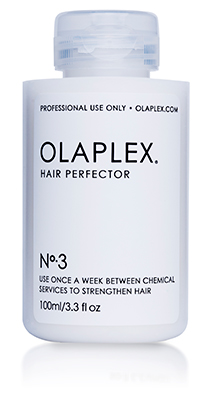
Olaplex, Hair Perfector
Unilever Pakistan was the leading player in the country’s hair care market in 2015 with a 10% retail value share, says Euromonitor, due to Unilever’s “internationally successful and respected brands, which have been introduced to domestic consumers through heavy investments in promotional and distribution activities, supplemented by on-the-ground brand activation campaigns.” Its Sunsilk brand “enjoys top-of mind awareness in the standard shampoos category among female consumers in Pakistan,” adds the market researcher.
Another factor driving sales among urban consumers is the growth in modern retail and online retailing in Pakistan, which has increased their access to international beauty and personal care products.
An April 2015 research report by Neilsen entitled The Future of Grocery: E-commerce, digital technology and changing shopping preferences around the world backs this idea. The report surveyed 40 countries representing developed and developing countries including Pakistan. It said that globally, 31% of consumers intended to buy shampoo and conditioners online in the next six months, adding that “products with steady consumption rates and long shelf lives are well-suited to online purchasing. Shampoo and conditioners was the second highest product types, next to body wash, that consumers in Pakistan and the other 39 countries in the report wanted to purchase online.
Online on the up
Certainly, internet sales will be a significant part of Pakistan’s hair care market going forward. In July 2014, Unilever partnered with daraz.pk to become the first company in Pakistan’s FMCG sector to offer an online retail solution for customers. “As part of this collaboration, consumers will be able to purchase a large variety of Unilever’s beauty and personal care products from the online portal,” said the company statement, adding that Pakistan has vast online sales potential because of its high mobile penetration and increasing use of the internet across the country.

L'Oréal Excellence Colourants
Among the products sold via this online portal are shampoos and conditioners from Unilever’s Toni&Guy brand, including Nourish Conditioner for Dry Hair, Cleanse Shampoo for Dry Hair, Men Deep Clean Shampoo and Nourish Conditioner for Fine Hair. Sunsilk is another popular Unilever brand which is available via the portal. The Sunsilk range of shampoo includes its range of 2016 Fashion Edition products: Stunning Black Shine shampoo, Hair Fall Solutions shampoo, Lusciously Thick & Long shampoo and Perfect Straight shampoo and conditioner. Dove’s Hair Fall Rescue shampoo is also available.
Kaymu Pakistan (Kaymu.pk) is another online retailer that sells a variety of hair care brands, including Karachi-based Subaru, Dove, Head & Shoulders (P&G), Oriflame, Suave Kids (Unilever), and a range of shampoos and conditioners from Sunsilk, Pantene (P&G), Silken (The Vitamin Company) and TRESemmé (Unilever).
Retail watch: Michael K Hair Studio, Islamabad
Cosmetics Business speaks to Asif Inyat,
Manager of the Michael K Hair Studio in
Islamabad about the latest hair care product
trends in Pakistan
Which types of hair care products are becoming more popular in Pakistan?
Hair colourant products, shampoo and hair oils
are becoming more popular in Pakistan. For a
long time, henna used to be the traditional hair
colourant in Pakistan, but now consumers are
shifting to branded hair colourants, conditioners
and more. Hair colourants are becoming popular
both with young and old people, who live in big
cities and also rural areas. While shampoo has
become a must-have product to cleanse hair,
hair gel has gained popularity among Pakistani
youths for styling and setting.
Which kinds of consumers specifically are interested in buying hair care products?
Interestingly, 70% of consumers of colourant
products are in the 40-plus age group, while only
30% of people aged 20-39 purchase colourants
and [added value] hair products such as
conditioners. 99% of our customers [are from]
big cities like Islamabad, Lahore and Karachi.
To what extent are wealthier consumers prepared to pay more for expensive hair care products?
Wealthier customers in Pakistan go to great
lengths to buy expensive hair products. Upper
middle class people and the business elite even
spend hundreds of US dollars on hair treatments
and products.
Beyond retail developments, hair care brands have also been introducing innovative new products to further attract consumers. Pantene for example released a new range of shampoos with the improved Pro-V formula with EDDS Keratin Damage Blockers in March 2015 for its Pakistani consumers. The products aim to prevent the damage caused by copper levels in hair from tap water, a problem particularly prevalent in Pakistan, where it causes dull, brittle, dry hair, even when freshly washed and conditioned.

GK Hair, Colour Protection
In June 2014, L’Oréal Paris introduced its Advanced Haircare range in Pakistan, claiming that products would be sold at affordable prices – at PKR195 ($1.86) for instance. Lines include Fall Repair 3X which is designed to help reduce hairfall; Smooth Intense, for frizzy hair; Nutri- Gloss, for intense shine; and Color Protect, for colour treated hair.
Moazzam Ali Khan, General Manager of marketing, trade marketing and sales functions for the consumer products division at L’Oréal Pakistan, says that L’Oréal Paris hair care “is a strategic pillar for L’Oréal Pakistan... And with shampoo being the biggest and oldest segment of the beauty market, L’Oréal in Pakistan had to make the move [to supply more added value products] as modern Pakistani women are now ready for advanced hair solutions that go beyond the basic regime.”
In the clear
Male grooming is another key and growing segment in Pakistan’s shampoo and conditioner market, and Unilever has been innovating here with the release of Clear Tech 2.0 shampoo, which is specifically designed for the male scalp.
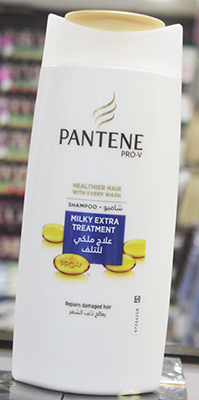
Pantene, Pro-V formula
Its range for men includes Clear Cool Black Shine and Clear Hairfall Decrease shampoo for men. “Men have greater sebum secretion in their scalps that leads to dandruff, which generic anti-dandruff shampoos cannot remove,” says Unilever Pakistan.
And with 52% of Pakistani males suffering from dandruff, the company says that both men and women in Pakistan rate dandruff as one of their top hair and scalp-related problems. “This is why Clear was the first [brand] in Pakistan to launch a male range of shampoos with Clear Tech 2.0 that is specifically designed for the male scalp,” it adds.
Trend watch: Celebrities fuel hair care spend in Pakistan
Cosmetics Business speaks
to Moazzam Ali Khan,
General Manager,
Consumer Products Division
at L’Oréal Pakistan, about
the effect that celebrities
and the media are having on
consumers in this category
How are hair care trends changing for women and men in Pakistan?
Media and movie stars from
both the local and Hollywood
movie industries are
catalysts for changing hair
care and hair style trends in
Pakistan. Inspired by their
favourite movie stars, football
stars and other celebrities,
people from all walks of life
in Pakistan take to hair
salons to achieve their
desired look.
What have been the main changes in terms of style and care?
Nobody likes dry, damaged and messy hair and
[this is the same] in Pakistan, where people spend
hefty amounts on hair care and styling. These
days, girls in Pakistan are crazy about adopting
Kim Kardashian’s hairstyle, [as well as] Jennifer
Lopez’s, both of whom are known for their sexy
styles and, of course, great hair.
Are men and women prepared to spend more on looking after their hair than they were before?
A decade ago, [the concept of] spending money
on hair care and styling in Pakistan was hardly
there. With the upper middle class making huge
progress and media playing an important role in
creating awareness about hair care, people in
Pakistan are spending more on hair care now.
What are richer consumers prepared to spend on their hair, and what products are they prepared to buy?
Wealthy Pakistani consumers pay as much as
$80 to $130 for a complete hair treatment. They
like L’Oréal products, which are popular in
Pakistan. Among their favourite products are
cleansing conditioners and hair masks, while
L’Oréal Paris Advanced Haircare 6 Oil Nourish
Extraordinary Oil is particularly successful with
our customers.
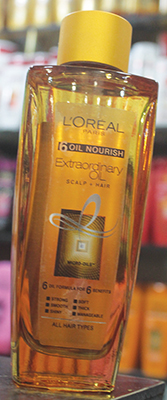
L’Oréal 6 Oil Nourish Extraordinary Oil
Euromonitor forecasts state that Pakistan’s male grooming market is set to register 14% CAGR to 2020 as consumers shift to branded men’s grooming products, and this is undoubtedly likely to benefit the country’s hair care market.
The market analyst also predicts that conditioners and 2-in-1 products are likely to boost Pakistan’s hair care category, with potential further sales in shampoo coming from rural consumers. Among urban consumers, hair colourants are also gaining popularity, as they are seen as a way to enhance style and personality.
The continued growth in the number of working women in Pakistan is also likely to benefit the hair care market to 2020, when according to Euromonitor it will be worth an estimated PKR 44.6bn ($425.49m), with a value CAGR of 5%.


